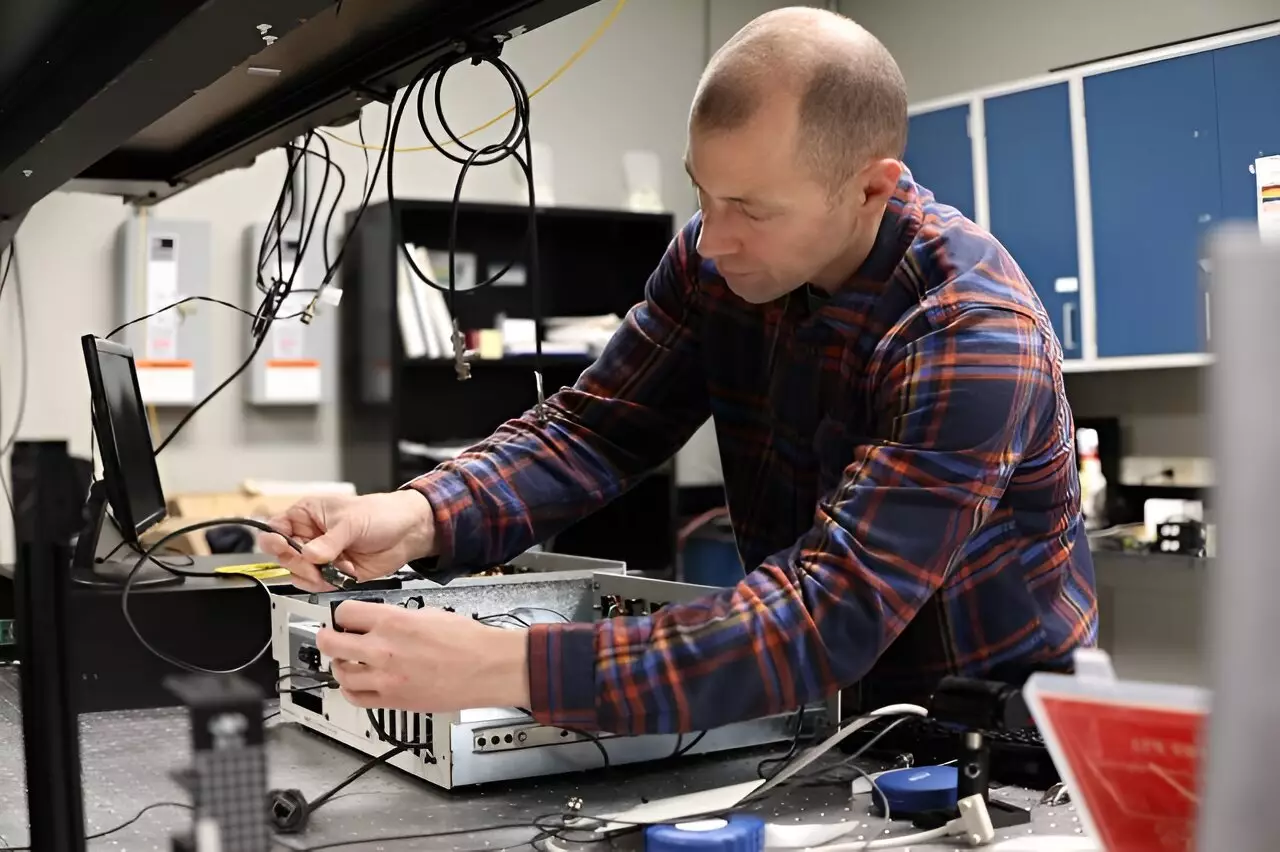In a recent study conducted by researchers at the Department of Energy’s Oak Ridge National Laboratory, significant advancements in quantum-based cybersecurity have been demonstrated in a real-world fiber optic network. This study builds upon previous research conducted in 2015 and showcases the potential for quantum key distribution as a secure method for sharing confidential information.
One of the key components of this research is quantum key distribution, a technique that allows two parties to generate a secure key that only they have access to. This is achieved by using lasers to create weak optical pulses that are transmitted between two points, typically referred to as Alice and Bob. By measuring these pulses, the receiving party can determine if any unauthorized parties have intercepted the message, thereby ensuring the security of the key.
The research team at ORNL implemented a true local oscillator to mitigate the effects of noise in the fiber-optic network. This local oscillator played a critical role in ensuring the coexistence of quantum and conventional data signals, enabling the transmission of quantum signals encoded in continuous variables. By describing the properties of light particles in terms of amplitude and phase, the researchers were able to create an almost infinite number of settings for distributing randomness, enhancing cybersecurity measures.
The use of continuous variables of photons for encoding not only improves the security of the information being transmitted but also allows for compatibility with existing classical communication systems. This breakthrough in information security not only addresses current vulnerabilities but also leverages existing fiber-optic infrastructure, making it a cost-effective and easily adoptable solution for organizations looking to enhance their cybersecurity measures.
Moving forward, the research team at ORNL plans to replicate their experiment in a variety of network scenarios to further validate their findings and explore additional applications of quantum-based cybersecurity. By focusing on improving the signal-to-noise ratio through the use of narrow energy lasers as local oscillators, the team hopes to optimize the distribution of secure keys and minimize potential vulnerabilities in the network.
The research conducted by the Department of Energy’s Oak Ridge National Laboratory represents a significant advancement in the field of quantum-based cybersecurity. By demonstrating the practical application of quantum key distribution in a deployed fiber link, the team has paved the way for future innovations in information security and network communications. Through their efforts, the researchers have not only addressed critical issues in cybersecurity but have also laid the foundation for a more secure and resilient digital infrastructure.


Leave a Reply